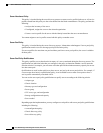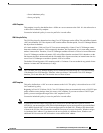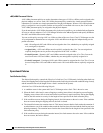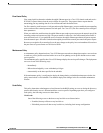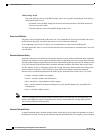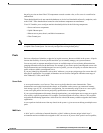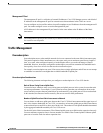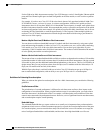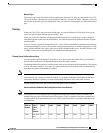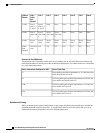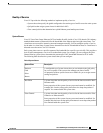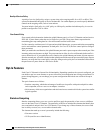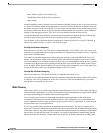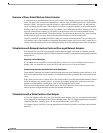
For the 6200 series fabric interconnects running Cisco UCS Manager, version 2.0 and higher, Ethernet uplink
ports and Fibre Channel uplink ports are both configurable on the base module, as well as on the expansion
module.
For example, if you have two Cisco UCS 5100 series chassis that are fully populated with half width Cisco
UCS B200-M1 servers, you have 16 servers. In a cluster configuration, with one LAN uplink per fabric
interconnect, these 16 servers share 20GbE of LAN bandwidth. If more capacity is needed, more uplinks from
the fabric interconnect should be added. We recommend that you have symmetric configuration of the uplink
in cluster configurations. In the same example, if 4 uplinks are used in each fabric interconnect, the 16 servers
are sharing 80 GB of bandwidth, so each has approximately 5 GB of capacity. When multiple uplinks are
used on a Cisco UCS fabric interconnect the network design team should consider using a port channel to
make best use of the capacity.
Number of Uplink Ports from I/O Module to Fabric Interconnect
You can choose to add more bandwidth between I/O module and fabric interconnect by using more uplink
ports and increasing the number of cables. In Cisco UCS, you can have one, two, or four cables connecting
a I/O module to a Cisco UCS 6100 series fabric interconnect. You can have up to eight cables if you're
connecting a 2208 I/O module and a 6248 fabric interconnect. The number of cables determines the number
of active uplink ports and the oversubscription ratio.
Number of Active Links from Server to Fabric Interconnect
The amount of non-oversubscribed bandwidth available to each server depends on the number of I/O modules
used and the number of cables used to connect those I/O modules to the fabric interconnects. Having a second
I/O module in place provides additional bandwidth and redundancy to the servers. This level of flexibility in
design ensures that you can provide anywhere from 80 Gbps (two I/O modules with four links each) to 10
Gbps (one I/O module with one link) to the chassis.
With 80 Gbps to the chassis, each half-width server in the Cisco UCS domain can get up to 10 Gbps in a
non-oversubscribed configuration, with an ability to use up to 20 Gbps with 2:1 oversubscription.
Guidelines for Estimating Oversubscription
When you estimate the optimal oversubscription ratio for a fabric interconnect port, consider the following
guidelines:
Cost/Performance Slider
The prioritization of cost and performance is different for each data center and has a direct impact on the
configuration of oversubscription. When you plan hardware usage for oversubscription, you need to know
where the data center is located on this slider. For example, oversubscription can be minimized if the data
center is more concerned with performance than cost. However, cost is a significant factor in most data centers,
and oversubscription requires careful planning.
Bandwidth Usage
The estimated bandwidth that you expect each server to actually use is important when you determine the
assignment of each server to a fabric interconnect port and, as a result, the oversubscription ratio of the ports.
For oversubscription, you must consider how many GBs of traffic the server will consume on average, the
ratio of configured bandwidth to used bandwidth, and the times when high bandwidth use will occur.
Cisco UCS Manager GUI Configuration Guide, Release 2.0
34 OL-25712-04
Traffic Management



